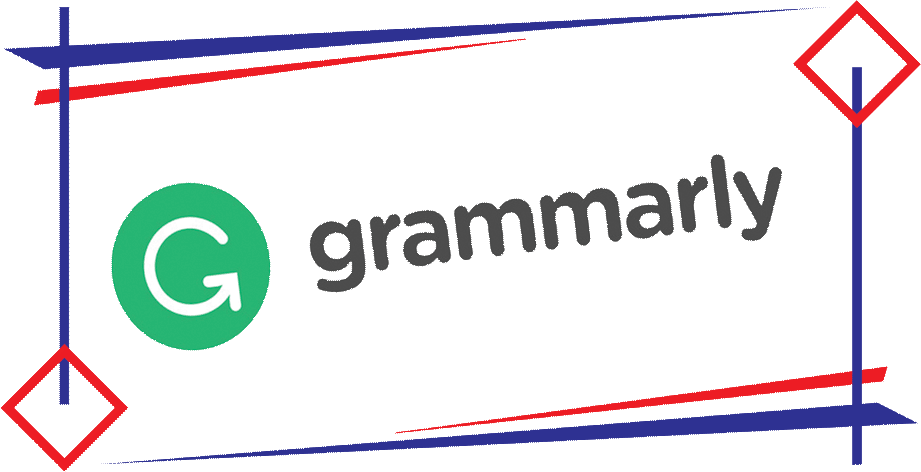Klasifikasi Jenis Pemeliharaan dan Perawatan Container Crane menggunakan Algoritma Machine Learning
Abstract
Pada industri jasa pelayanan peti kemas, Terminal Nilam merupakan pelanggan dari PT. BIMA, yang secara khusus bergerak dibidang jasa perbaikan dan perawatan alat berat. Terminal ini menjadi sentral tempat untuk melakukan aktifitas bongkar muat peti kemas domestik yang memiliki empat buah container crane untuk melayani dua kapal. Proses perawatan alat berat seperti container crane yang selama ini beroperasi, agaknya kurang memperhatikan data pengelompokkan atau klasifikasi jenis perawatan yang dibutuhkan oleh alat berat tersebut. Di kemudian hari, alat berat dapat menunjukkan kinerja yang tidak maksimal bahkan dapat berujung pada kecelakaan kerja. Selain itu, kelalaian perawatan container crane juga dapat menyebabkan pembengkakan biaya perawatan lanjut. Target produksi bongkar muat dapat berkurang dan juga keterlambatan jadwal kapal sandar sangat mungkin terjadi. Metode pembelajaran menggunakan mesin atau biasa disebut dengan Machine Learning (ML), dengan mudah dapat melenyapkan kemungkinan-kemungkinan tersebut. ML dalam penelitian ini, kami rancang agar bekerja dengan mengidentifikasi lalu mengelompokkan jenis perawatan container crane yang sesuai, yaitu ringan atau berat. Metode ML yang pilih untuk digunakan dalam penelitian ini yaitu Random Forest, Support Vector Machine, k-Nearest Neighbor, Naïve Bayes, Logistic Regression, J48, dan Decision Tree. Penelitian ini menunjukkan keberhasilan ML model tree dalam melakukan pembelajaran jenis data perawatan container crane (numerik dan kategoris), dengan J48 menunjukkan performa terbaik dengan nilai akurasi dan nilai ROC-AUC mencapai 99,1%. Pertimbangan klasifikasi kami lakukan dengan mengacu kepada tanggal terakhir perawatan, hour meter, breakdown, shutdown, dan sparepart.
Keywords
Full Text:
PDFReferences
L. Barua, B. Zou, and Y. Zhou, “Machine learning for international freight transportation management: a comprehensive review,” Res. Transp. Bus. Manag., vol. 34, p. 100453, 2020.
J. Malisan, I. Sadjiono, and B. Istijab, “Potensi Pusat Konsolidasi Pengangkutan untuk Regional Asia Pasifik: Suatu Analisis Kinerja,” J. Penelit. Transp. Laut, vol. 20, no. 2, pp. 98–108, 2018.
A. Maddeppungeng, I. Suryani, and D. Febriana, “OPTIMALISASI KOMPOSISI ALAT BERAT PADA PROYEK PEMBANGUNAN PELABUHAN PT. CEMINDO GEMILANG,” Konstruksia, vol. 9, no. 1, pp. 59–67, 2018.
X. Chen, R. Bai, R. Qu, H. Dong, and J. Chen, “A Data-Driven Genetic Programming Heuristic for Real-World Dynamic Seaport Container Terminal Truck Dispatching,” in 2020 IEEE Congress on Evolutionary Computation (CEC), 2020, pp. 1–8.
A. Krisdiyantoro, W. Wibawati, and H. Haryono, “Analisis Reliabilitas pada Hydraulic Spreader System Container Crane di PT. Terminal Petikemas Surabaya,” J. Sains dan Seni ITS, vol. 8, no. 2, pp. D65--D71, 2020.
A. Khusyairi and E. S. Hisyam, “Analisis Kinerja Pelayanan Operasional Peti Kemas di Pelabuhan Pangkalbalam Kota Pangkalpinang,” in FROPIL (Forum Profesional Teknik Sipil), 2016, vol. 4, no. 2, pp. 74–86.
L. Heilig, R. Stahlbock, and S. Voß, “From digitalization to data-driven decision making in container terminals,” in Handbook of Terminal Planning, Springer, 2020, pp. 125–154.
M. Cannas, P. Fadda, G. Fancello, L. Frigau, and F. Mola, “Delay prediction in container terminals: A comparison of machine learning methods,” in 13th world conference on transportation research, 2013, pp. 1–6.
A. Viellechner and S. Spinler, “Novel Data Analytics Meets Conventional Container Shipping: Predicting Delays by Comparing Various Machine Learning Algorithms,” in Proceedings of the 53rd Hawaii International Conference on System Sciences, 2020.
D. Ignatov and A. Ignatov, “Decision stream: Cultivating deep decision trees,” in 2017 ieee 29th international conference on tools with artificial intelligence (ictai), 2017, pp. 905–912.
A. S. Dovbysh, V. V Moskalenko, and A. S. Rizhova, “Information-Extreme Method for Classification of Observations with Categorical Attributes,” Cybern. Syst. Anal., vol. 52, no. 2, pp. 224–231, 2016.
H. Zareiforoush, S. Minaei, M. R. Alizadeh, and A. Banakar, “Qualitative classification of milled rice grains using computer vision and metaheuristic techniques,” J. Food Sci. Technol., vol. 53, no. 1, pp. 118–131, 2016.
Y. Pristyanto and I. Pratama, “Missing Values Estimation on Multivariate Dataset: Comparison of Three Type Methods Approach,” in 2019 International Conference on Information and Communications Technology (ICOIACT), 2019, pp. 342–347.
E. Frank and A. Mark, “Hall, and Ian H. Witten (2016). The WEKA Workbench. Online Appendix for" Data Mining: Practical Machine Learning Tools and Techniques.” morgan kaufmann, 2016.
R. Couronné, P. Probst, and A.-L. Boulesteix, “Random forest versus logistic regression: a large-scale benchmark experiment,” BMC Bioinformatics, vol. 19, no. 1, p. 270, Dec. 2018.
S. Zhang, X. Li, M. Zong, X. Zhu, and R. Wang, “Efficient knn classification with different numbers of nearest neighbors,” IEEE Trans. neural networks Learn. Syst., vol. 29, no. 5, pp. 1774–1785, 2017.
A. Navlani, “KNN Classification using Scikit-learn,” Data Camp, August, 2018.
Z. Deng, X. Zhu, D. Cheng, M. Zong, and S. Zhang, “Efficient kNN classification algorithm for big data,” Neurocomputing, vol. 195, pp. 143–148, 2016.
A. Faisal, Y. Alkhalifi, A. Rifai, and W. Gata, “Analisis Sentimen Dewan Perwakilan Rakyat Dengan Algoritma Klasifikasi Berbasis Particle Swarm Optimization,” JOINTECS (Journal Inf. Technol. Comput. Sci., vol. 5, no. 2, pp. 61–70, 2020.
and J. C. B. Pranali, B. Kanchan, “Emotion Recognition from Audio Signals using SVM and Naive Bayes : Review,” Int. J. Res. Appl. Sci. Eng. Technol, vol. 7, no. 10, pp. 870–874, 2019.
D. J. and J. H. Martin, “Logistic Regression,” in in Speech and Language Processing, 2019.
M. A. Saif, A. N. Medvedev, M. A. Medvedev, and T. Atanasova, “Classification of online toxic comments using the logistic regression and neural networks models,” in AIP Conference Proceedings, 2018, vol. 2048, no. 1, p. 60011.
N. Saravana and D. V Gayathri, “Performance and Classification Evaluation of J48 Algorithm and Kendall’s Based J48 Algorithm (KNJ48),” Int. J. Comput. Trends Technol. (IJCTT)--Volume, vol. 59, 2018.
K. Thirunavukkarasu, A. S. Singh, P. Rai, and S. Gupta, “Classification of IRIS Dataset using Classification Based KNN Algorithm in Supervised Learning,” in 2018 4th International Conference on Computing Communication and Automation (ICCCA), 2018, pp. 1–4.
S. Narkhede, “Understanding AUC-ROC Curve,” Towar. Data Sci., vol. 26, 2018.
A. Desai and R. Sunil, “Analysis of machine learning algorithms using WEKA,” Int. J. Comput. Appl., vol. 975, p. 8887, 2012.
DOI: https://doi.org/10.18860/mat.v13i1.11525
Refbacks
- There are currently no refbacks.
Copyright (c) 2021 Via Ardianto Nugroho, Derry Pramono Adi, Agustinus Bimo Gumelar

This work is licensed under a Creative Commons Attribution-NonCommercial-ShareAlike 4.0 International License.
The journal is indexed by :
_______________________________________________________________________________________________________________
Editorial Office:
Informatics Engineering Department
Faculty of Science and Technology
Universitas Islam Negeri Maulana Malik Ibrahim Malang
Jalan Gajayana 50 Malang, Jawa Timur, Indonesia 65144
Email: matics@uin-malang.ac.id
_______________________________________________________________________________________________________________
![]()
This work is licensed under a CC-BY-SA 4.0.
© All rights reserved 2015. MATICS , ISSN : 1978-161X | e-ISSN : 2477-2550






